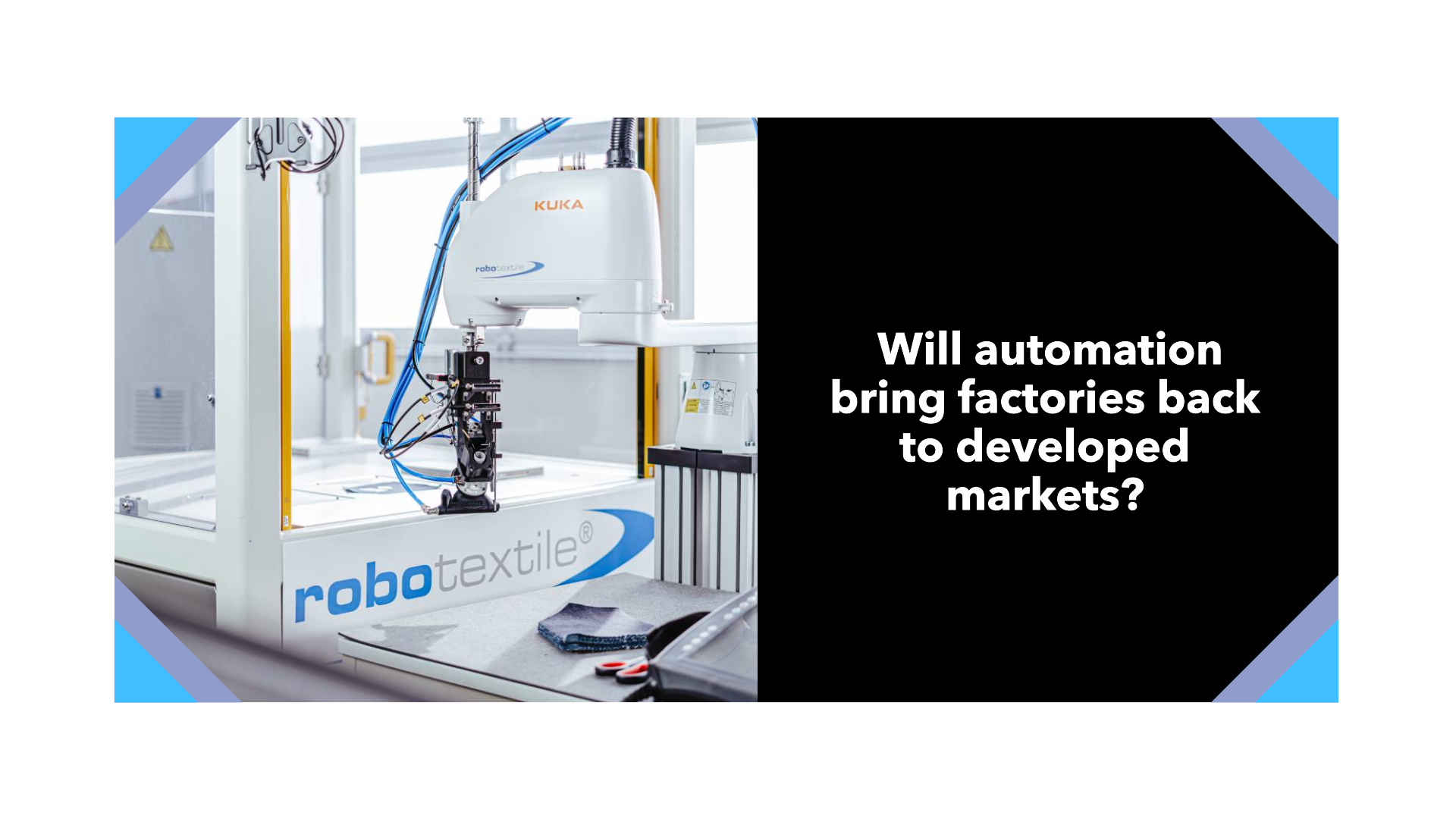Introduction
For decades, apparel manufacturing has been offshored to regions with lower labor costs, particularly in Asia. However, rising wages, supply chain disruptions, and advancements in automation have reignited discussions on reshoring—the process of bringing production back to developed markets. Countries like the United States, the United Kingdom, and Germany are now seeing a renewed focus on localized manufacturing, driven by the potential of automation to reduce costs and improve efficiency.
This shift is not without challenges, but with robotics, artificial intelligence (AI), and digitalization, many brands are exploring the feasibility of reestablishing apparel factories closer to home. According to the U.S. Reshoring Initiative, the number of reshored manufacturing jobs in the U.S. reached 350,000 in 2022, marking a 53% increase from 2021. As automation continues to evolve, the question remains: can it truly bring large-scale apparel production back to developed markets?
The Factors Driving Reshoring
Several key factors are making reshoring a more attractive option for apparel brands and manufacturers:
1. Rising Labor Costs in Offshore Markets
While developing countries historically offered low-cost labor, wages have been increasing. In China, for example, the average manufacturing wage has grown by 250% since 2005. Similar trends are observed in Vietnam, Bangladesh, and India, making offshore production less cost-effective.
2. Supply Chain Disruptions and Geopolitical Risks
The COVID-19 pandemic and ongoing geopolitical tensions have exposed vulnerabilities in global supply chains. Shipping delays, material shortages, and increased tariffs have led brands to rethink long-distance production. According to McKinsey’s State of Fashion 2023 Report, 67% of fashion executives are planning to increase nearshoring efforts to mitigate risks.
3. Consumer Demand for Speed and Sustainability
With the rise of fast fashion and e-commerce, consumers expect shorter lead times. Localized production can reduce shipping times, enabling just-in-time manufacturing and on-demand production. Additionally, sustainability-conscious consumers prefer domestically produced garments to reduce carbon footprints.
How Automation is Making Local Manufacturing Viable
Automation is at the heart of reshoring efforts, offering solutions to traditionally labor-intensive processes. Here’s how technology is bridging the cost gap and improving efficiency:
1. Robotics and AI-Powered Sewing Machines
One of the biggest hurdles to reshoring has been the complexity of sewing garments, which traditionally requires human dexterity. However, innovations such as SoftWear Automation’s “Sewbot” can autonomously stitch garments with up to 90% accuracy, drastically reducing labor costs. Brands like Adidas have experimented with automated production through initiatives like Speedfactory, leveraging robotics to produce shoes in Germany and the U.S.
2. Digital Pattern Making and 3D Knitting
3D knitting technology, used by brands like Nike and Uniqlo, allows garments to be produced in one seamless process, reducing fabric waste and manual labor. Shima Seiki’s WHOLEGARMENT technology enables fully automated knitting, supporting localized, small-batch production.
3. Smart Factories and AI-Driven Quality Control
AI-powered computer vision is improving quality control by detecting defects in real-time. Industry 4.0 smart factories use IoT (Internet of Things) to integrate automation, ensuring consistent quality and minimizing waste. According to a study by Capgemini, AI-driven automation can cut production errors by 30-50%.
4. On-Demand and Custom Production
Reshoring aligns with the growing trend of made-to-order apparel, reducing inventory waste. Companies like Printful and Teespring leverage automation to produce customized clothing on demand, eliminating the need for large stockpiles and improving responsiveness to market trends.
Challenges of Reshoring with Automation
Despite its potential, reshoring through automation presents several challenges:
1. High Initial Investment Costs
Setting up automated production requires significant capital investment in robotics, AI, and digital infrastructure. While automation reduces long-term labor costs, the upfront expenses can be prohibitive for smaller brands.
2. Skilled Workforce Shortages
While automation reduces reliance on manual labor, it increases the demand for highly skilled workers in robotics, AI programming, and machine maintenance. A report from the National Association of Manufacturers estimates that 2.1 million U.S. manufacturing jobs will go unfilled by 2030 due to skill gaps.
3. Flexibility and Customization Challenges
Mass automation works well for standardized products, but fashion is inherently diverse in design and materials. Adapting robots to handle intricate sewing patterns and soft fabrics remains a challenge.
4. Competitive Offshore Markets Still Exist
Countries like Vietnam, Bangladesh, and India continue to invest in modern manufacturing technologies while maintaining lower labor costs, keeping offshore production an attractive alternative.
The Future of Reshoring in Apparel Production
The long-term viability of reshoring will depend on the balance between automation efficiency and cost competitiveness. Here’s what the future may hold:
1. Hybrid Production Models
Rather than complete reshoring, many brands may adopt a hybrid approach, keeping certain labor-intensive processes offshore while automating high-efficiency operations domestically. For example, Inditex (Zara’s parent company) combines nearshoring with local automation to maintain rapid supply chain responsiveness.
2. AI-Powered Fashion Supply Chains
As AI improves predictive analytics, brands will optimize inventory management, reducing waste and improving demand forecasting. This will make localized production even more cost-effective.
3. Government Incentives and Policies
Governments in developed markets are supporting reshoring initiatives through tax incentives, grants, and subsidies. The U.S. CHIPS and Science Act and the European Union’s Industrial Strategy are examples of policies aimed at strengthening domestic manufacturing resilience.
Conclusion
Automation is redefining the future of apparel manufacturing, making reshoring a viable alternative for brands seeking efficiency, sustainability, and supply chain resilience. While challenges remain, the adoption of AI-driven production, robotics, and digitalization is narrowing the cost gap between offshore and local manufacturing. The shift won’t happen overnight, but as automation technology advances and labor costs continue to rise in traditional manufacturing hubs, reshoring could become an increasingly attractive solution. Brands that strategically invest in smart manufacturing today may well lead the fashion industry of tomorrow.
